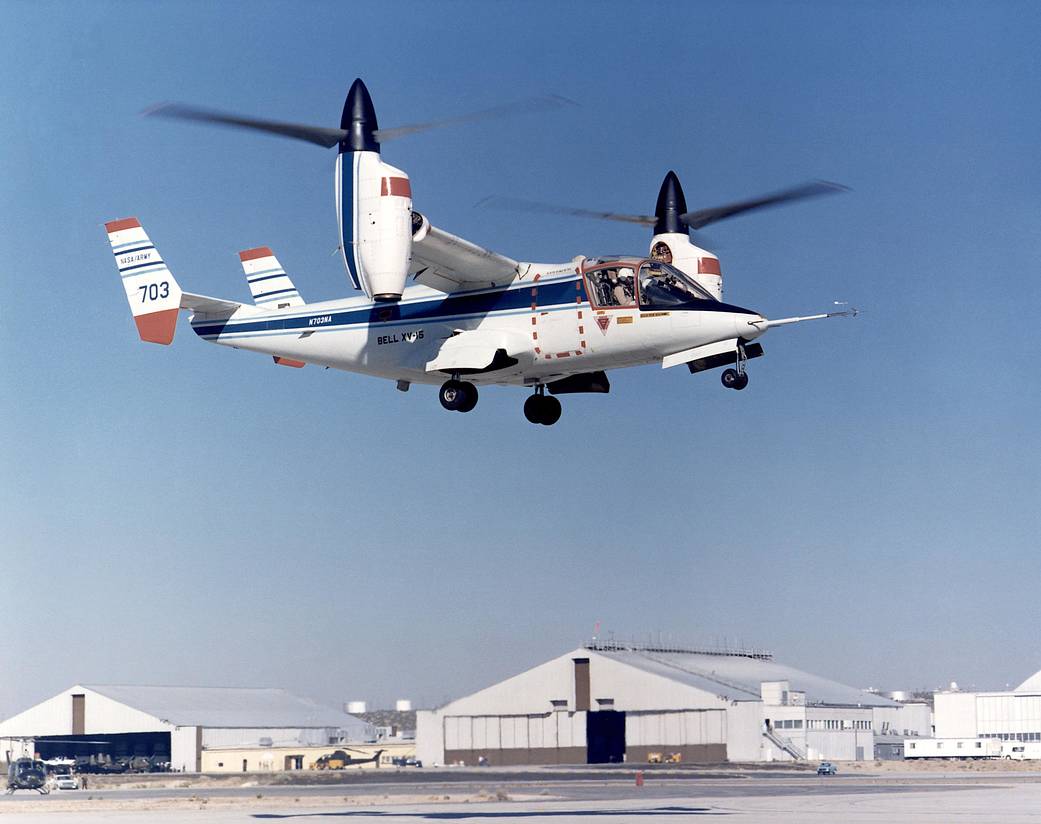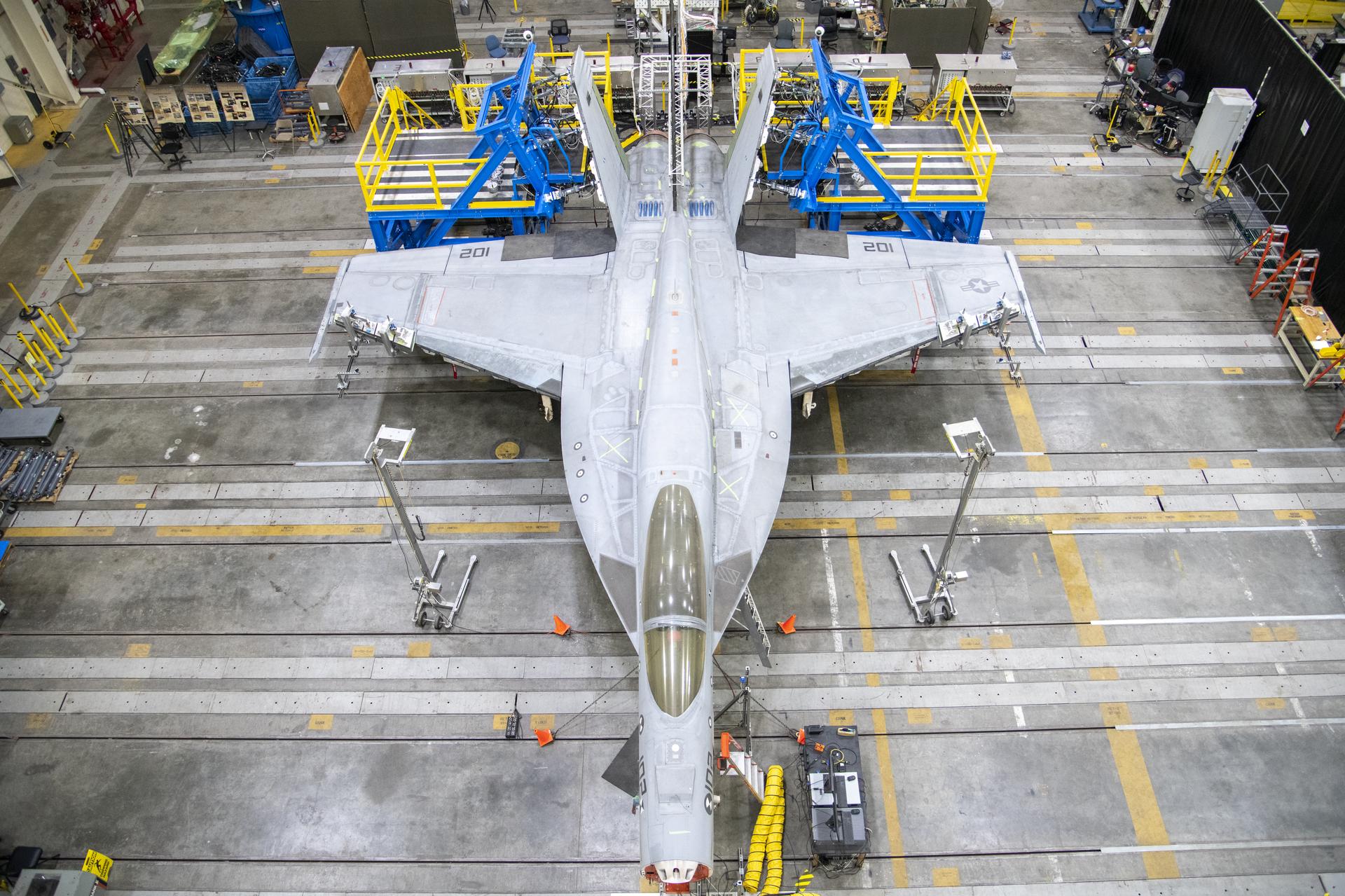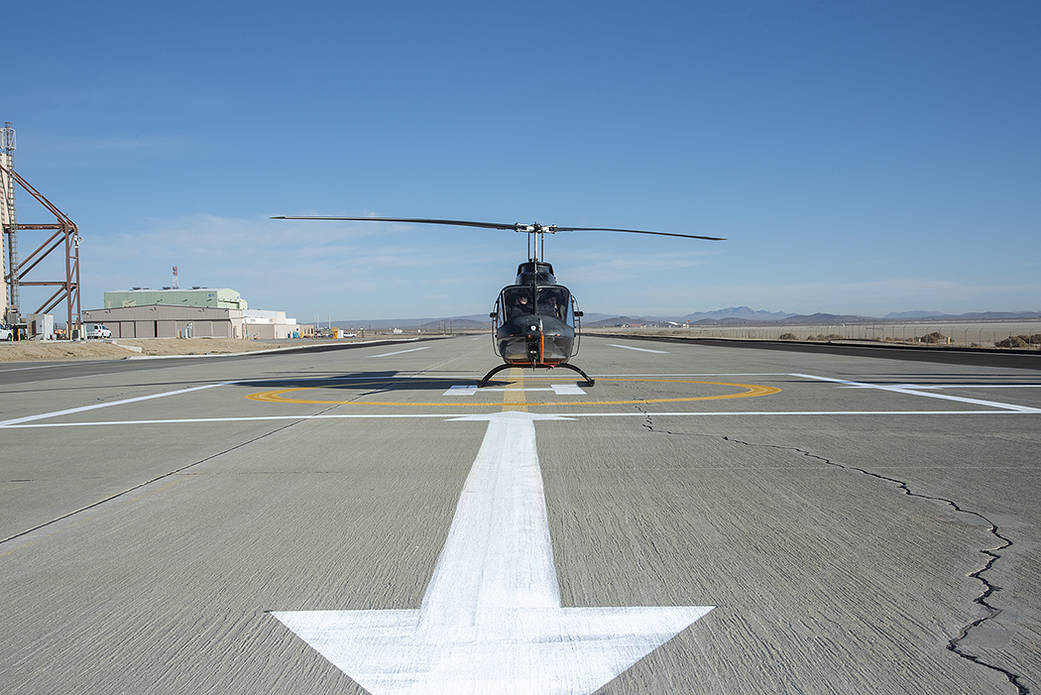The two Bell XV-15 Tiltrotor aircraft were involved in limited research at NASA’s Dryden (now Armstrong) Flight Research Center in Edwards, California, in 1980 and 1981. The XV-15 combines standard aircraft cruise flight with vertical takeoff and landing (VTOL) and short takeoff and landing (STOL) capabilities. The first XV-15 Tiltrotor flight for NASA Dryden occurred in October 1980 at the Army contingent at Edwards Air Force Base, Edwards, California.
The development of the XV-15 Tiltrotor research aircraft was initiated in 1973 with joint Army/NASA funding as a “proof of concept”, or “technology demonstrator” program, with two aircraft being built by Bell Helicopter Textron (BHT) in 1977. Ship number 1 was given NASA number 702, and ship #2 was 703. Aircraft development, airworthiness testing, and the basic “proof of concept” testing were completed in September 1979.
The aircraft are powered by twin Lycoming T-53 turboshaft engines that are connected by a cross-shaft and drive three-bladed, 25 ft diameter metal rotors (the size extensively tested in a wind tunnel). The engines and main transmissions are located in wingtip nacelles to minimize the operational loads on the cross-shaft system and, with the rotors, tilt as a single unit.
For takeoff, the proprotors and their engines are used in the straight-up position where the thrust is directed downward. The XV-15 then climbs vertically into the air like a helicopter. In this VTOL mode, the vehicle can lift off and hover for approximately one hour.
Once off the ground, the XV-15 has the ability to fly in one of two different modes. It can fly as a helicopter, in the partially converted airplane mode. The XV-15 can also then convert from the helicopter mode to the airplane mode. This is accomplished by continuous rotation of the proprotors from the helicopter rotor position to the conventional airplane propeller position. During the ten to fifteen second conversion period, the aircraft speed increases and lift is transferred from the rotors to the wing.
Operating as a conventional airplane, the XV-15 can cruise for more than two hours. To land, the proprotors are rotated up to the helicopter rotor position and flown as a helicopter to a vertical landing.
The tiltrotor concept has many advantages. The ease with which the aircraft can be converted from one flight mode to another enhances its maneuverability and permits the aircraft to be configured to meet mission requirements. Operating as a VTOL aircraft, it can take off like a helicopter and deliver payloads on half the amount of fuel consumes by a helicopter when traveling distances greater than 185 kilometers. Takeoff and landing terminals can be small, making tiltrotor aircraft ideal for intercity commuter travel. In the STOL mode, tiltrotor aircraft are ideal for long distance transport of heavy cargos into remote areas, where only short runways are available. The XV-15 has been the primary influence for Bell’s V-22, the first production tilt rotor.
XV-15 Specifications
(Applicable to both N-702NA and N-703NA)
Weights
- Design gross: 13,000 pounds
- Maximum gross: 15,000 pounds
- Useful load at design gross: 2,927 pounds
Dimensions
- Fuselage length (nose tip to vertical fin tip): 42.1 feet
- Rotor span (tip to tip, max. diameter): 57.2 feet
- Maximum height (vertical fin): 12.75
Performance
- Estimated cruise speed: 345 mph at 16,500 feet
- Estimated maximum speed: 375 mph at 16,500 feet
Power Plants
Two Lycoming LTC1K-4K free turbine engines (modified versions of the standard Lycoming T53-L-13B)































